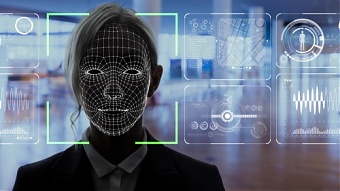Estonia, EU – Baltic States, Legislation, Technology, Transport
International Internet Magazine. Baltic States news & analytics
Wednesday, 24.04.2024, 14:29
Estonia to use face recognition in border control
 Print version
Print version |
|---|
The database for the entire external border of the Schengen area will record information about the entries and exits of third country nationals and make the data available to border control officials in all member states.
Currently, border crossings by third country nationals are recorded by each country in their own database, while border control officials in other Schengen member states can determine the dates of entry and exit from the stamp put into the passport of each third country national.
In the future, all these data will be available in a single system.
Eve Kalmus, leading border official at the Estonian Police and Border guard Board, told Postimees that the main effect of the new ENTRY-EXIT system is the availability of information about border crossings from a single place to all member states regardless of where the border crossing took place.
"This means that if a person has entered the Schengen area across the external border of Estonia, but will exit in Spain, border control officials there can learn via the system whether the traveller has overstayed their permitted period of stay and via which country's external border they entered the area," Kalmus said.
Implementation of the new system requires that facial recognition equipment is operational in all member states.
"With the equipment a photo is taken of the citizen arriving at the border, which the equipment will automatically compare against the photo in the travel document scanned by the border official," Kalmus said.
"This makes the check more reliable and safe, enabling the border official to use the time they would otherwise spend on carefully comparing the face against the photograph to concentrate on a conversation with the person crossing the border in order to establish the purpose of their travel and identify potential discrepancies in the person's statements," the official explained.
The system is to be introduced in all member states in 2022.
In Estonia, the size of the budget of the project is two million euros, which is financed by the European Union via the Internal Security Fund (ISF) in collaboration with the Interior Ministry. While the exact number of the pieces of equipment to be acquired depends on the offer, an estimated one hundred facial recognition cameras are necessary to have the devices present in all border control booths.
- 26.08.2021 LLC Dizozols Investments finalizes investment attraction deal with Crowdestor with record-high profits
- 30.12.2020 Накануне 25-летия Балтийский курс/The Baltic Course уходит с рынка деловых СМИ
- 30.12.2020 On the verge of its 25th anniversary, The Baltic Course leaves business media market
- 30.12.2020 Hotels showing strong interest in providing self-isolation service
- 30.12.2020 EU to buy additional 100 mln doses of coronavirus vaccine
- 30.12.2020 ЕС закупит 100 млн. дополнительных доз вакцины Biontech и Pfizer
- 29.12.2020 В Латвии вводят комендантский час, ЧС продлена до 7 февраля
- 29.12.2020 Latvia to impose curfew, state of emergency to be extended until February 7
- 29.12.2020 Linde Gas открывает завод в Кедайняйской СЭЗ
- 29.12.2020 В Риге можно изолироваться в трех гостиницах








 «The Baltic Course» Is Sold and Stays in Business!
«The Baltic Course» Is Sold and Stays in Business!

